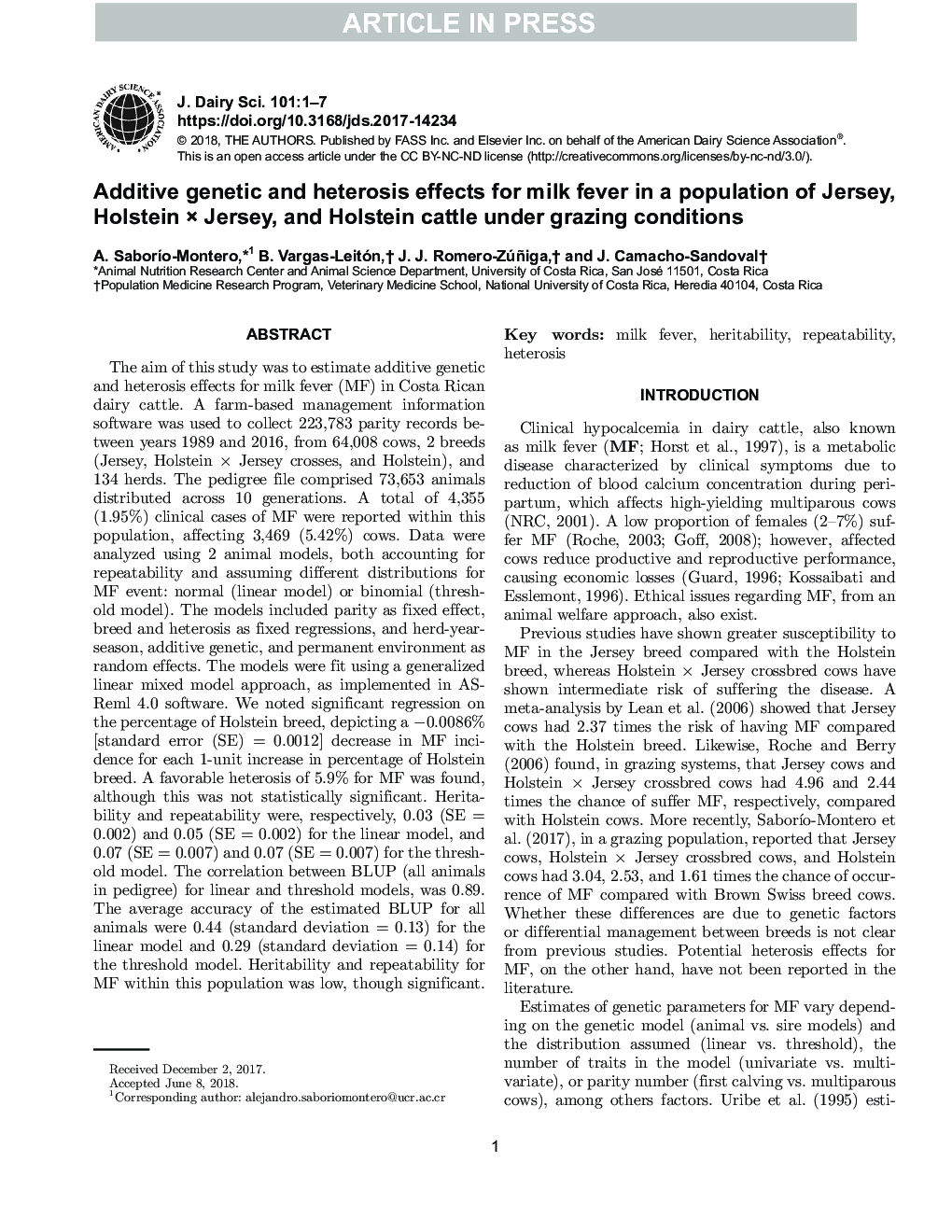| کد مقاله | کد نشریه | سال انتشار | مقاله انگلیسی | نسخه تمام متن |
|---|---|---|---|---|
| 10158076 | 1666505 | 2018 | 7 صفحه PDF | دانلود رایگان |
عنوان انگلیسی مقاله ISI
Additive genetic and heterosis effects for milk fever in a population of Jersey, Holstein à Jersey, and Holstein cattle under grazing conditions
دانلود مقاله + سفارش ترجمه
دانلود مقاله ISI انگلیسی
رایگان برای ایرانیان
کلمات کلیدی
موضوعات مرتبط
علوم زیستی و بیوفناوری
علوم کشاورزی و بیولوژیک
علوم دامی و جانورشناسی
پیش نمایش صفحه اول مقاله

چکیده انگلیسی
The aim of this study was to estimate additive genetic and heterosis effects for milk fever (MF) in Costa Rican dairy cattle. A farm-based management information software was used to collect 223,783 parity records between years 1989 and 2016, from 64,008 cows, 2 breeds (Jersey, Holstein à Jersey crosses, and Holstein), and 134 herds. The pedigree file comprised 73,653 animals distributed across 10 generations. A total of 4,355 (1.95%) clinical cases of MF were reported within this population, affecting 3,469 (5.42%) cows. Data were analyzed using 2 animal models, both accounting for repeatability and assuming different distributions for MF event: normal (linear model) or binomial (threshold model). The models included parity as fixed effect, breed and heterosis as fixed regressions, and herd-year-season, additive genetic, and permanent environment as random effects. The models were fit using a generalized linear mixed model approach, as implemented in ASReml 4.0 software. We noted significant regression on the percentage of Holstein breed, depicting a â0.0086% [standard error (SE) = 0.0012] decrease in MF incidence for each 1-unit increase in percentage of Holstein breed. A favorable heterosis of 5.9% for MF was found, although this was not statistically significant. Heritability and repeatability were, respectively, 0.03 (SE = 0.002) and 0.05 (SE = 0.002) for the linear model, and 0.07 (SE = 0.007) and 0.07 (SE = 0.007) for the threshold model. The correlation between BLUP (all animals in pedigree) for linear and threshold models, was 0.89. The average accuracy of the estimated BLUP for all animals were 0.44 (standard deviation = 0.13) for the linear model and 0.29 (standard deviation = 0.14) for the threshold model. Heritability and repeatability for MF within this population was low, though significant.
ناشر
Database: Elsevier - ScienceDirect (ساینس دایرکت)
Journal: Journal of Dairy Science - Volume 101, Issue 10, October 2018, Pages 9128-9134
Journal: Journal of Dairy Science - Volume 101, Issue 10, October 2018, Pages 9128-9134
نویسندگان
A. SaborÃo-Montero, B. Vargas-Leitón, J.J. Romero-Zúñiga, J. Camacho-Sandoval,